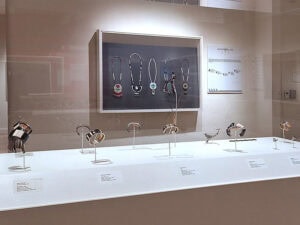
Susan Cummins: Can you describe the Kete fair and symposium event?
Caroline Billing: Kete was a four-day art fair and symposium that was recently held in Wellington, New Zealand. It is a new event (this was its second incarnation) and the first of its kind here for us. The concept is to bring together galleries to showcase their selected artists across different craft mediums. Talks around the subjects of collecting, artists’ practices, and current issues in craft were held, and it included keynote speakers during the daytime and evenings.
What part did you play?
Caroline Billing: I represented three of my jewelers at Kete with the aim of highlighting three distinct and successful current practices by New Zealanders in contemporary jewelry.
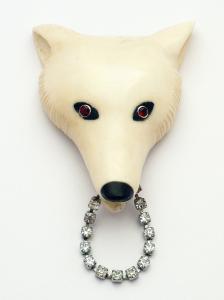
Susan Cummins: Can you describe the Kete fair and symposium event?
Caroline Billing: Kete was a four-day art fair and symposium that was recently held in Wellington, New Zealand. It is a new event (this was its second incarnation) and the first of its kind here for us. The concept is to bring together galleries to showcase their selected artists across different craft mediums. Talks around the subjects of collecting, artists’ practices, and current issues in craft were held, and it included keynote speakers during the daytime and evenings.
What part did you play?
Caroline Billing: I represented three of my jewelers at Kete with the aim of highlighting three distinct and successful current practices by New Zealanders in contemporary jewelry.
Why did you bring Jane Dodd, Kirsten Haydon, and Areta Wilkinson in particular?
Caroline Billing: These artists have well established jewelry practices and are recognized for their skills as makers and practitioners who continually push their practices. I selected them for their strength of ideas, use of materials, techniques, and skill. Whilst their works and themes are visually contrasting, there is a strong use of narrative, social history, and storytelling that runs through their practices and connects them.
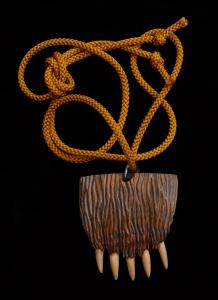
Jane Dodd: I came to jewelry when I was already in my 30s, studying with Pauline Bern at Unitec in Auckland, and then joining Workshop 6, a wonderful, stimulating shared jewelry space with Areta Wilkinson, among others. My work for the first 14 years was largely fabricated in metal and almost always narrative in nature. Themes of landscape and place, natural history, human history, and storytelling dominated. In the past five years, I have broadened my material palette, incorporating bone, shell, and wood significantly in my work, and also at times precious stones and pearls. This has allowed a liberating change of scale and color. While my concerns for the natural world and our (human’s) relation to it remain paramount in the conceptual background to my work, I am also interested in the craft of making. The more I work in softer materials, the more I enjoy the process and challenge of carving and construction. The virtuosity of historical jewelers and carvers are a constant inspiration to me.
Does your work relate to Bone, Stone, and Shell (BSS) tradition of New Zealand jewelry? How?
Jane Dodd: I don’t see my work as belonging to the BSS tradition despite some similarity of materials. (Perhaps none of the jewelers in the BSS show did, either.) I came to these materials from the “back door”—a means to an aesthetic end rather than the starting place. There may be natural relations, associations, and connections between my work and some work in that tradition, but it is not conscious or studied.
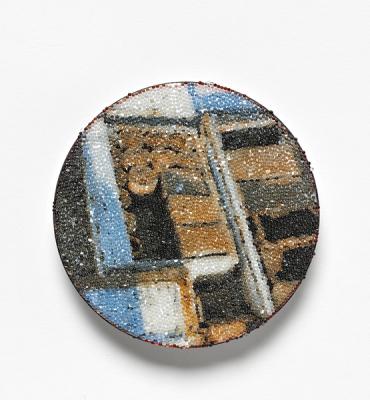
Kirsten Haydon: My ongoing research involves thinking through process and making objects that explore and interpret Antarctica. In 2004, during a New Zealand “Artists to Antarctica” fellowship, the environment of Antarctica, both natural and constructed, provided me with a vantage point from which to consider and develop new concepts and processes to make objects. The objects I make provide alternative interpretations of Antarctica by engaging with the viewer through the recognizable personal souvenir and jewelry objects.
In my work, I use personal photographs at the same time as examining historic stories and representations of Antarctica. The objects produced reference historical souvenir and jewelry objects that are displayed in museums and consider the way meaning and memory of place have presence in objects. Using studio-based experimentation along with enameling and contemporary technologies, my research explores the links enameling has had with micro-mosaics and miniature painting. This experimentation is used to re-imagine historical examples of personal souvenirs and jewelry, presenting a further understanding of Antarctica’s significance both culturally and environmentally.
Are you still intrigued with making jewelry related to your visit to the Antarctic? Why?
Kirsten Haydon: Yes, I would say that I am. My experience of Antarctica was overwhelming and has stayed with me. It challenged my practice to attempt to find ways to depict a landscape that I could not describe with words. More recently, I have noticed that this experience mediates and focuses my practice while allowing me to reflect more broadly on the world we live in through my interpretations of the Antarctic landscape. I find Antarctica an enduring place for me to reflect on as I work slowly through the experience of being there. I continue to link this experience with my way of thinking about objects, their meaning, and their potential to resonate the environment we live in and influence.
What do you think is an important text for contemporary makers to read?
Kirsten Haydon: Of course, it is important as a maker that is engaged to read the texts from the field. In the field of contemporary jewelry, alive or dead, I always read artists’ catalogues, reviews, and historical and critical texts from the field of jewelry and silversmithing. I would find it difficult to refer to one text, as there is no one seminal text. You need to piece this together.
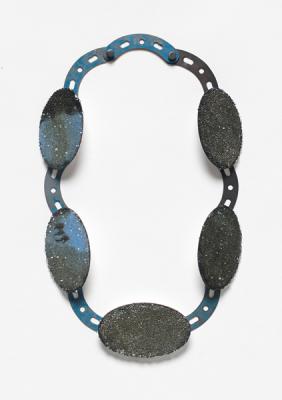
For makers, I would say it is also important to read subject-specific texts that relate to your own practice and your own subject, and these will come from a multitude of sources. As well as reading texts, I would say that it is also essential to look at works and be aware of what has been done, but then to be with objects and images that affect you.
As a maker, I read texts, but I also look, think, experiment, and I make. I am an artist first, a maker of objects. I speak with objects, and I always hope that these objects have some meaning and sense in the world. If it is jewelry, it is wearable, and as a series it creates an environment and a narrative that is not just about “what is jewelry?” It is about being here in the world now, a reflection how we are affecting this place. I find as a maker that the analysis of narratives, images, and objects, historic and contemporary, is essential.
Most recently, I have been reading Making: Anthropology, Archaeology, Art and Architecture by Tim Ingold, The Open Studio by Susan Stewart, and Antarctic-related literature. I have been looking at polarized images of ice cores, black and white images from Herbert Ponting and Frank Hurley. I have also found a lanternslide projector for my studio and a number of enameled and cut-glass objects.
What lead you to make jewelry?
Areta Wilkinson: I have always loved the intimacy jewelry has with people’s lives, and that some of these personal narratives travel with jewelry.
What motivates you to make jewelry now?
Areta Wilkinson: Jewelry making, for me, is about learning. I am recording the world that I experience through making, and creative production is the way I process knowledge.
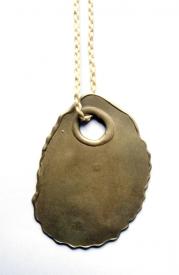
Are you working on your PhD thesis now? Can you explain it briefly?
Areta Wilkinson: In my doctoral narrative, I created an experiential research environment grounded in the values of Kaupapa Māori Theory (theory from Te Ao Māori and unique to Aotearoa/New Zealand) to allow my practice to be shaped by the collective mātauranga (knowledge) and to reflect this worldview through my artwork. The resulting cultural practice was a comprehensive one. Concepts were explored and processed through applied practice, responding to the culture I was a part of, a practice that included the appropriate transmission of knowledge and community participation. I went back to taonga tūturu, the personal adornments of Waitaha, Kāti Mamoe, and Kāi Tahu ancestors held in museums, to make connections and extend narratives. New works do not seek to replicate an existing image of the world, but instead alert me to a new way of seeing from the world in which I stand, whilst still maintaining a relationship to the past. The jewelry practice is invigorated by community insights and cultural values, and praxis is something of value to pass on to others. It is a taonga.
What do you think is an important text for contemporary makers to read?
Areta Wilkinson: What I’d like makers to be aware of are counter narratives and theory towards object making and applied research. For this, I would recommend “Indigenous Research as Localised Critical Theory” by N. K. Denzin, Y. S. Lincoln, and L. T. Smith (editors) in the Handbook of Critical and Indigenous Methodologies.
Regarding the exponential wonder of provenance (which for Māori is similar to the concept of whakapapa/genealogy) and the life of objects and living with objects, a text I particularly enjoyed is The Hare With Amber Eyes by Edmund de Wall.




